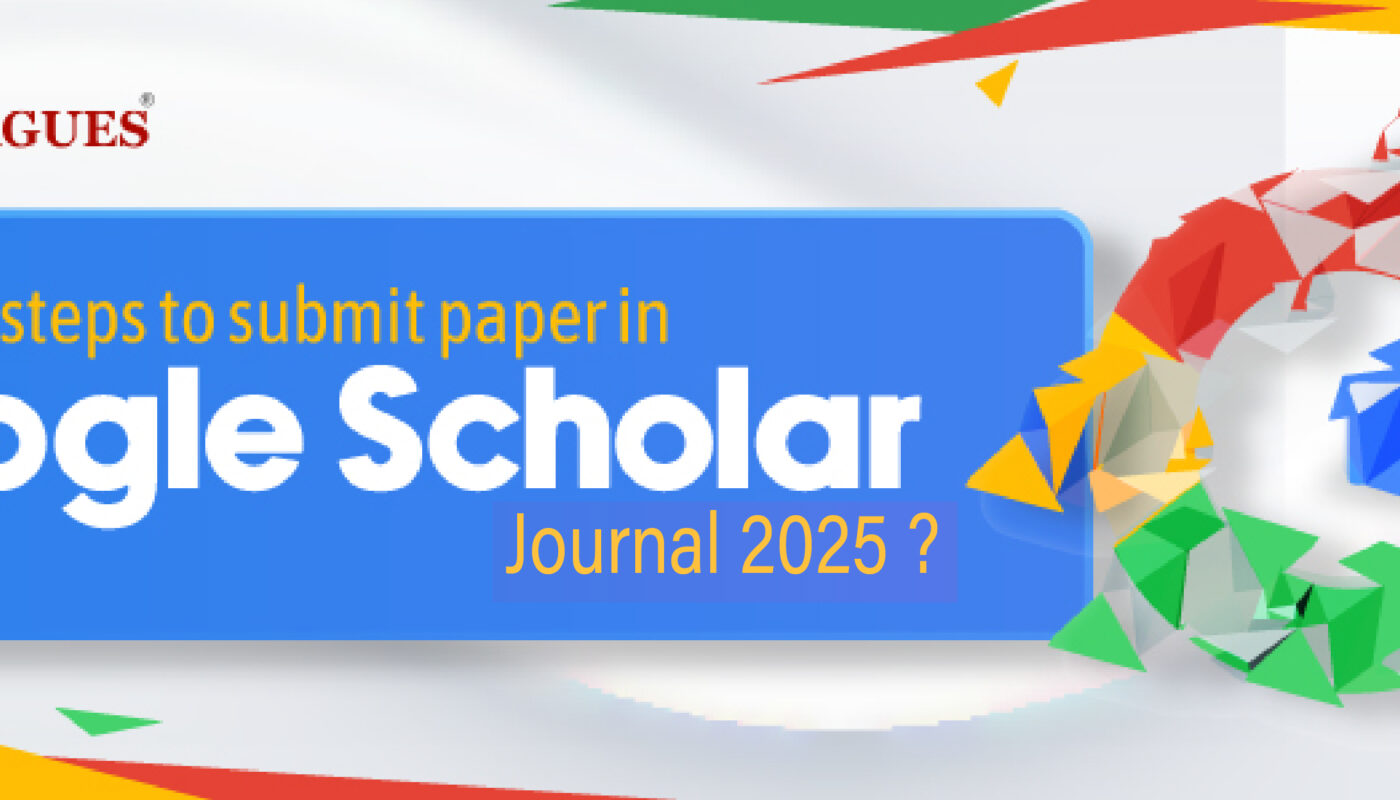Embarking on the scholarly journey of publishing is a rite of passage for academics, researchers, and thought leaders worldwide. The act of submitting a paper to Google Scholar symbolizes a bridge between the rigor of research and the vast expanse of global knowledge dissemination. It’s a meticulous process that, when navigated with precision, can catapult one’s findings into the spotlight of academic discourse. This article demystifies the steps involved in submitting a paper to Google Scholar and how to publish paper in Google Scholar, ensuring that your scholarly contributions are not just a drop in the ocean, but a beacon guiding the curious and knowledge-thirsty minds of your field.
Who Stands To Gain From Submitting Papers To Google Scholar?
- In the vast expanse of academic publishing on google scholar, Google Scholar emerges as a beacon of accessibility, casting a wide net across the sea of scholarly communication.
- It is the platform where the fruits of rigorous research are made visible and available to a global audience.
- But who should set sail in this expansive digital ocean by choosing to submit paper in Google scholar journal?
- Academics & Researchers -The Vanguard Of Knowledge
- At the forefront are academics and researchers, the vanguards of knowledge, for whom Google Scholar serves as a pivotal arena to disseminate research findings.
- These individuals, often affiliated with universities or research institutions, produce a continuous stream of scholarly articles, studies, and papers that contribute to the collective understanding of their field.
- The pursuit of “how to publish research paper in Google Scholar” follows a set of protocols.
- By submitting their work to Google Scholar, they ensure that their research is discoverable by peers, which can lead to citations, collaborations, and a heightened profile within the academic community.
- Postgraduate Students – The Emerging Scholars
- Postgraduate students, the emerging scholars on the cusp of their academic careers, also stand to benefit significantly from submitting their theses and dissertations to Google Scholar.
- This exposure not only marks their entry into the scholarly world but also increases the visibility of their work, potentially influencing future opportunities for research funding, postdoctoral positions, and academic employment.
- Independent Researchers – The Lone Navigators
- Independent researchers, often navigating the waters of inquiry alone, without the anchor of an academic institution, may find in Google Scholar a platform that levels the playing field.
- By submitting their papers, they gain the opportunity to reach an audience that might otherwise remain inaccessible, allowing them to contribute meaningfully to the global discourse in their area of expertise.
- Professionals & Practitioners – The Applied Knowledge Seekers
- Professionals and practitioners, whose work may straddle the practical and theoretical realms, can also find value in submitting to Google Scholar.
- For these individuals, the platform offers a way to bridge the gap between research and practice, ensuring that their findings and innovations are accessible to both their peers and those who can apply this knowledge in real-world settings.
- Institutions & Organizations – The Knowledge Hubs
- Institutions and organizations, as knowledge hubs, often produce a wealth of research reports, policy papers, and case studies.
- By making these documents available on Google Scholar, they not only enhance their organizational prestige but also contribute to the public good by informing policy-making, industry practices, and public discourse.
- Begin your journey on how to publish on google scholar.
How Does One Initiate Their Scholarly Journey On Google Scholar?
- Creating a Google Scholar profile is akin to planting a flag in the digital landscape of academia.
- It is a declaration of one’s presence and a foundational step towards contributing to the vast repository of scholarly literature.
- Here’s how to lay the cornerstone of your academic identity on Google Scholar.
- What Are The Preliminary Steps To Crafting A Google Scholar Profile?
- Before diving into the digital depths of Google Scholar, one must first ensure they have a Google account.
- This account is the key that unlocks the door to various Google services, including Google Scholar.
- Once you have an account, or if you already possess one, the journey to creating your scholarly profile begins.
- Where Does One Begin The Profile Creation Process?
- The portal to your Google Scholar profile is found by navigating to the Google Scholar website.
- Here, you will find the option to ‘Create my profile’. Clicking this initiates the process, leading you to a setup page where the crafting of your academic persona commences.
- How Should You Populate Your Profile Information?
- Filling in your profile involves several key steps –
- Name & Affiliation
- Start with your name as you would like it to appear in your citations, followed by your current affiliation.
- This information anchors your profile in the academic community.
- Look up a list of Google scholar journal to find your ideal journal.
- Email Verification
- Google Scholar requires an email verification, preferably one associated with your academic institution, which serves to validate your affiliation and enhances the credibility of your profile.
- Areas Of Interest
- Specify your areas of academic interest.
- This categorization helps in connecting you with relevant scholarly circles and makes your work discoverable to those seeking expertise in your fields of study.
- Photo & Homepage
- Adding a professional photo and a link to your academic homepage provides a face to the name and a direct link to your broader academic contributions.
- Who Can View Your Google Scholar Profile?
- Upon creation, you have the choice to make your profile public, allowing your name and work to be indexed by Google Scholar and visible to anyone, or to keep it private until you are ready to unveil your scholarly endeavors.
- How Do You Add Publications To Your Profile?
- Google Scholar provides an option to add your articles manually or to review automatic suggestions based on your name and interests.
- It is crucial to ensure accuracy in this step, as these publications will be associated with your academic identity.
- What Are The Finishing Touches To Your Profile?
- Finalize your profile by setting up alerts for citations of your work, which allows you to track the impact of your research.
- Additionally, you can enable updates for recommended articles in your field, keeping you abreast of the latest developments.
- Rely on the Bioleagues Worldwide platform to get a grip on how to get google scholar indexing in quick time.
How Does One Navigate The Submission Process For Google Scholar?

- The submission of a paper to Google Scholar is a process that demands attention to detail and an understanding of the platform’s requirements.
- It’s a multi-step journey that, when done correctly, can lead to the broad dissemination of one’s scholarly work.
- Get access to an exclusive Google Scholar indexed journals list right here at the Bioleagues Worldwide platform.
- What Is The Initial Step In Submitting A Paper To Google Scholar?
- To begin, one must identify the appropriate venue for their paper. Google Scholar itself is not a publisher but an aggregator of scholarly articles from various journals and conferences.
- Therefore, the first step is to submit your paper to a scholarly journal or a conference that is indexed by Google Scholar.
- Where Should You Look For Suitable Journals Or Conferences?
- Research and select a reputable journal or conference that aligns with your paper’s subject matter.
- Ensure that this platform is recognized by Google Scholar to guarantee that your paper, once published, will appear in search results.
- How Do You Prepare Your Paper For Submission?
- Before submitting your paper, adhere to the following guidelines –
- Formatting
- Ensure your paper meets the publication’s formatting guidelines, which may include specific styles for citations, headings, and layout.
- Quality
- The paper should be of high quality, proofread, and peer-reviewed, if possible, to increase the likelihood of acceptance.
- Metadata
- Prepare the necessary metadata for your paper, including the title, abstract, keywords, and author information, which are crucial for indexing in Google Scholar.
- Who Is Responsible For The Submission Process?
- As the author, you are responsible for the submission process, although you may delegate tasks such as formatting or metadata compilation to co-authors or assistants.
- How Do You Submit Your Paper To The Chosen Journal Or Conference?
- Once your paper is prepared, follow these steps –
- Submission Portal
- Locate the submission portal for the journal or conference, which is typically found on their website.
- Account Creation
- Create an account or log in if you already have one.
- Document Type Selection
- Select the type of document you are submitting, whether it’s an article, review, case study, etc.
- Details Entry
- Fill in the details about your article, including the title, abstract, authors, and any other required information.
- File Upload
- Upload your paper file, adhering to any specified formats such as PDF or Word document.
- Confirmation
- Review all the information, submit your paper, and wait for a confirmation email that acknowledges receipt of your submission.
- What Happens After Submission?
- Post-submission, your paper will undergo a review process determined by the publication’s policies.
- This may include peer review, editorial review, or both.
- You may be asked to make revisions based on feedback received.
- Learn more about how to check if a journal is indexed in Google Scholar, and other topics right here on the platform.
The Path to Scholarly Visibility
Submitting a paper to a platform indexed by Google Scholar is a meticulous process that, when completed successfully, can significantly enhance the visibility and impact of your research. It is a path that requires careful preparation, from selecting the right journal to ensuring that your paper meets all the necessary criteria for submission. By following these steps, you can ensure that your scholarly work reaches the widest possible audience, contributing to the global exchange of knowledge and ideas.




